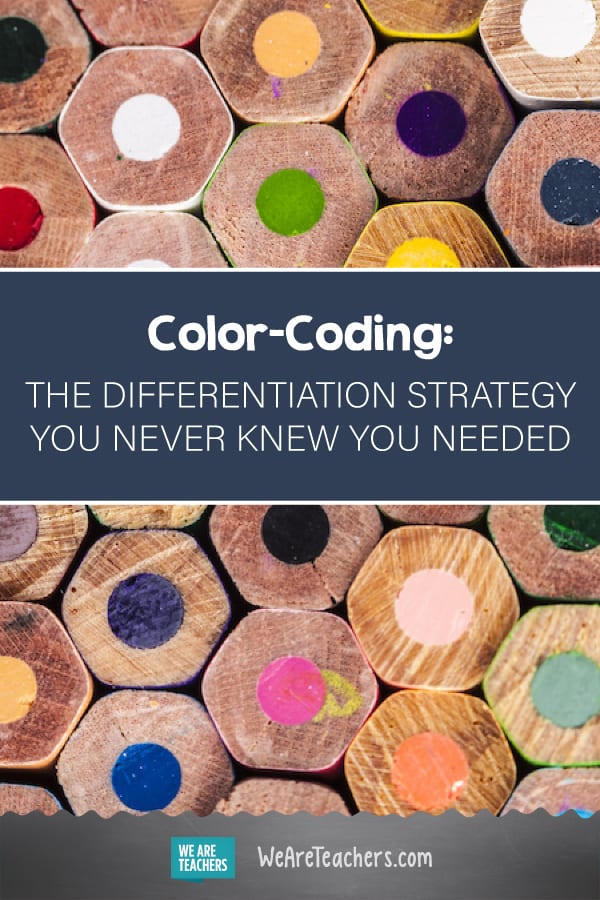Does anyone else get overly excited when they get a new set of Mr. Sketch markers? Colorful markers and highlighters help engage students, but there is so much more to it. There are real, tested benefits of color-coding in the classroom.
Think about all the things we associate with certain colors, like green for go or pink for breast cancer awareness. For years, marketing departments have been associating brands with certain colors so that their messages will stick in consumers’ minds (e.g., Twitter, McDonald’s, Target, Starbucks, etc.).
In the classroom, when strategically and systematically implemented, color-coding can have the same effect. It may take a bit more planning and preparation, but it’s worth it!
In fact, Pruisner (1993) found that when comparing outcomes of black-and-white versus color-cued presentations and assessments, systematic color-coding improved recall and retention. Dzulkifli and Mustafar (2012) also studied whether adding color could improve memory. They concluded that “color has the potential to increase chances of environmental stimuli to be encoded, stored, and retrieved successfully” because it vividly displays relationships between ideas.
The psychology of color is fascinating. Shift eLearning says that “using the right color, and the correct selection and placement can seriously affect feelings, attention, and behavior when learning.” Color can help students differentiate, retain, and transfer knowledge and, according to Ozelike (2009), pay attention to critical information for meaningful learning. It’s time that we leveraged that to our advantage. Plus, color just makes everything more exciting and appealing, right? The question is how can we, as teachers, take this and apply it to our instruction? Here are just a few ideas:
1. Distinguishing between new ideas and concepts
Color-coding can assist students in distinguishing between concepts and ideas. Below is an example of how color-coding can be used for main idea and details, but it can also be used for compare and contrast, author’s purpose, fact versus opinion, you name it! In this example, main idea is always yellow, while key details are green.
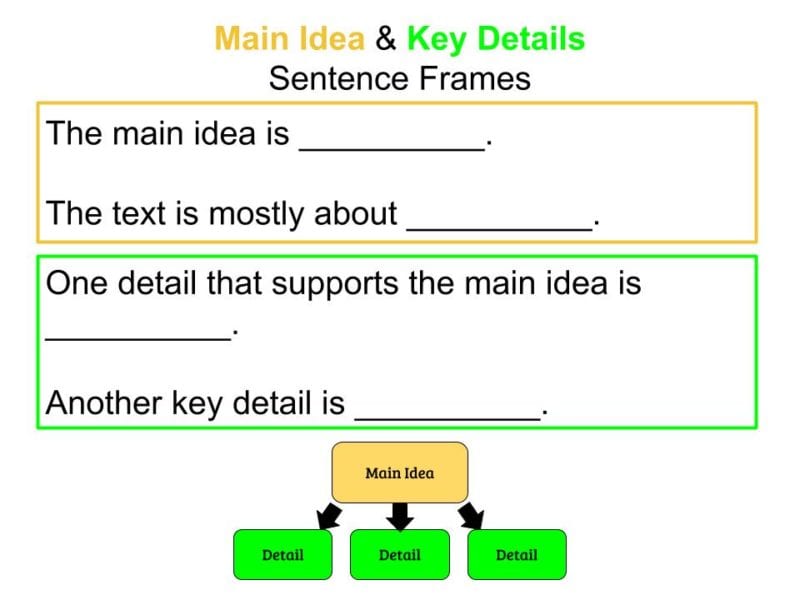

Here is another example of using color to distinguish between concepts in math. Color-coding can support mathematical thinking in that it can help students organize their thinking, make their thinking visible to others, and make connections. It can also strengthen visual representation to aid students in internalizing their learning.
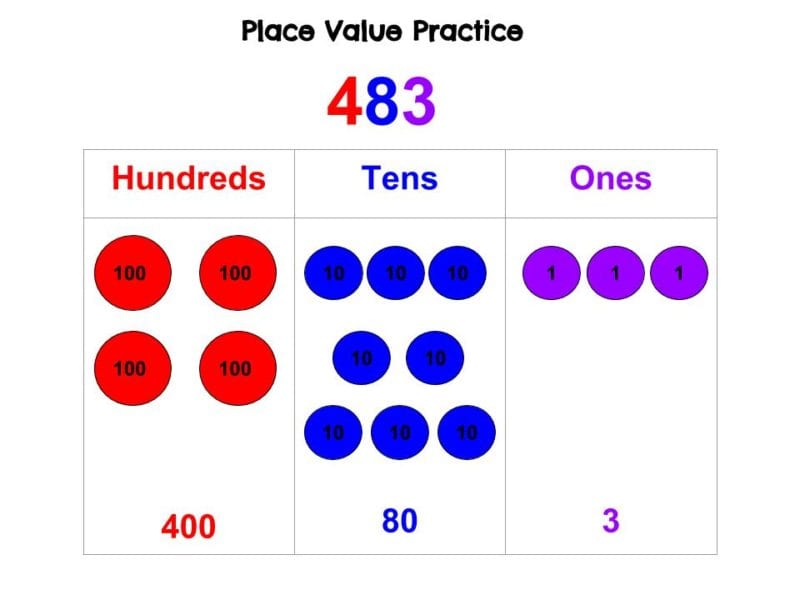
[contextly_auto_sidebar]
2. Selective highlighting
Another color-coding strategy is selective highlighting. This strategy requires explicit teaching, extensive modeling and support, as well as clear student directions. However, when implemented correctly, it can help students organize their learning and deepen their comprehension.

In the example above, the instructions for students were:
- Highlight the vocabulary words pink.
- Color the main idea yellow.
- Highlight the supporting details green.
- Write the main idea and details on the lines below.
3. Color-coded graphic organizers
Ewoldt and Morgan (2017) noted that “color-coding visual organizers provides another layer of support for writing development,” and “using color-coding in combination with strategy instruction has the potential to improve overall understanding.” Sentence and paragraph frames are great writing supports, but not if students don’t know how and when to use them. Color-coding these frames as well as graphic organizers (or having the students do it themselves) is a simple step that can make all the difference.
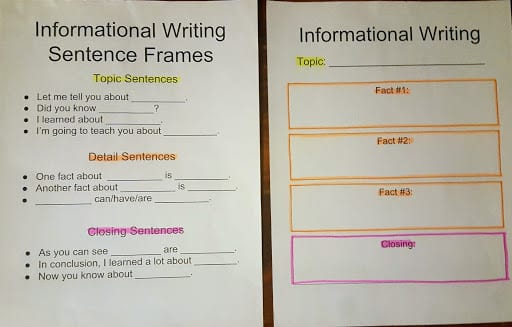
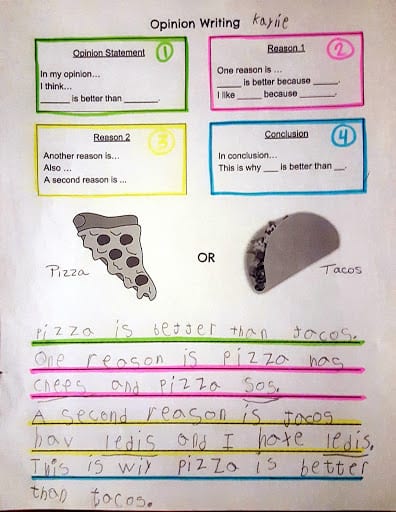
4. Supporting student discourse
We all know how important it is to get our students talking, and providing a dialogue frame can be a great way to scaffold speaking activities. Color-coding these frames can make them more user-friendly because it makes it easier for students to identify their part(s). Don’t forget to have students switch roles at some point so they get to practice all roles!
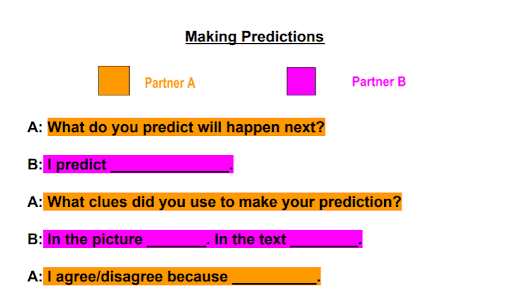
Warning: Don’t overdo it!
Although color-coding can be extremely effective, too much can overcomplicate things. Try to stick to three colors (or fewer) per lesson and keep it consistent! Any color can be used for any topic but, once introduced, the color should remain consistent in order to avoid confusion. For example, if students used blue when comparing at the beginning of the year, make sure you use that same color for every comparing lesson.
There are a multitude of ways to use color in the classroom. How do you use color-coding as a teaching strategy? Share your ideas in our WeAreTeachers HELPLINE group on Facebook.
Plus, check out 25 ways to use sticky notes in the classroom.
